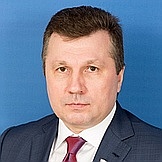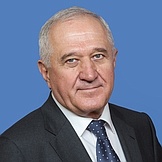Regional flags and emblems


PROFILE
Established 11 March 1936
Capital Ivanovo
The Ivanovo Region is part of the Central Federal District
Area 21,400 sq km
Population 897 900 (2025)
Ethnic groups
(2020 National Census, %):
Russian – 95,98
Other – 4,02
Administrative divisions (2024)
Municipal districts – 21
City districts – 6
Rural towns – 24
Rural districts – 92
Geography and climate
The Ivanovo Region is located in the centre of European Russia; a large portion of it lies between the Volga and Klyazma rivers. This is one of the smallest regions in Russia. The Ivanovo Region borders on the Vladimir, Nizhny Novgorod, Kostroma and Yaroslavl regions. Its territory is 158 km north to south and 230 km east to west.
The region has about 2,000 rivers, 200 glacial, floodplain and karst lakes, 45 water reservoirs (including a part of the Gorky reservoir) and the Volga-Uvod canal. The region’s biggest rivers include the Volga, Nerl, Uvod and Teza.
The climate in the region is temperate continental. January temperatures average –11.1°C. July temperatures average 17.2°C. Precipitation averages 34 mm in January and 90 mm in July. The growing season with temperatures above 5°С lasts 160 to 170 days.
Vegetation: coniferous and mixed forests, which are considerably thinned out as a result of human activity.
Government
The legislative branch is represented by the Ivanovo Region Duma, which is a unicameral, permanent, representative and only body of legislative authority in the region.
The Ivanovo Region Duma has 30 deputies, with 20 of them running in single-mandate constituencies and the other 10 in the single electoral district in proportion to the number of votes cast for lists of candidates nominated by electoral associations.
The current Ivanovo Region Duma was elected in September 2023. Its term expires in September 2028.
The executive branch in the Ivanovo Region is represented by the region’s system of executive bodies led by the Government of the Ivanovo Region, which is the supreme executive body of the region headed by the Governor of the Ivanovo Region.
The Governor of the Ivanovo Region is the region’s highest-ranking official, who defines the goals and priorities of work and determines the system and structure of the bodies of executive authority in the Ivanovo Region. He is elected for five years by Russian citizens who permanently reside in the region. The term of office of the current incumbent expires in September 2028.
The Government of the Ivanovo Region, the permanent and supreme executive body in the region, forms the executive agencies of the Ivanovo Region and ensures their coordinated activities.
Economy and natural resources
The Ivanovo Region is the only Russian industrial region with a high concentration of textile producing and garment manufacturing companies. Industrial output accounts for over 20% of the regional GDP. Major textile enterprises develop and implement investment projects aimed at modernising and expanding production, as well as phasing out imports. The development of textile industry by updating traditional textiles and organising the production of synthetic fabrics is one of the main priorities in the region’s economy. The Ivanovo Region produces a wide range of textile products, such as cotton, technical, tapestry, furniture and jacquard fabrics.
The region’s biggest enterprises also include machine building, chemical and wood processing companies whose products are used in the real economy, which is why the demand for these goods is determined by the dynamics of the country’s and the region’s economic development.
The region also produces high-tech machine tools, construction equipment, metal castings, crawler excavators and mobile cranes. The wood processing industry manufactures various kinds of particle board, while the chemical industry turns out products for textile enterprises, carbon black and paints and varnishes.
Mining does not play a significant role in the region’s economy and is based on local deposits of nonmetallic minerals, sand to produce silicate products, gravel and sand deposits, peat and sapropel.
Agriculture accounts for about 5% of the regional GDP. Livestock farming and crop production are well developed. Key crops are cereals, potatoes and vegetables. The region specialises in livestock breeding for its dairy and meat industry and poultry farming.
Culture and tourism
The Ivanovo Region is a region that showcases the entire history of manufacturing linen and cotton fabrics – from spinning wheels, wooden weaving looms and hand painting to modern automated production.
The region’s major crafts centres include Palekh (icon-painting and miniature lacquer paining), Kholui (miniature lacquer paining), and Shuya (accordions). Puchezh, Ivanovo, Pestyaki and Verkhny Landekh are famous for handmade embroidered goods, while Privolzhsk is known for its jewellery, and Ryapolovo − for artistic weaving.
Major landmarks in Palekh include the Zinovyev House Museum, which opened on 5 December 1984. The museum’s exhibits tell the story of the famous artist’s life and work, as well as everyday life and Russian rural traditions.
The region also has the Ivanovo Museum of Local History, Ivanovo Printed Cotton Museum, Kineshma Museum of Art and History, House Museum of the Tsvetayev Family in Novo-Talitsy, Levitan House Museum and the Museum Estate of Medieval Family in Plyos, as well as various architectural monuments, such as the Assumption Cathedral and the Trinity Church.
The Ivanovo Region has a great number of unique, environmentally pristine areas. The Yuzhsky District has huge potential as a tourist destination – it is known for the cleanest lakes and rivers, large and small, as well as its dense forests. No wonder this district was dubbed the Central Russia’s Karelia. People from remote locations come here to hunt, fish, and go berry picking and mushroom hunting. Every year, thousands of people come to the region to undergo treatment at local health centres and resorts.


